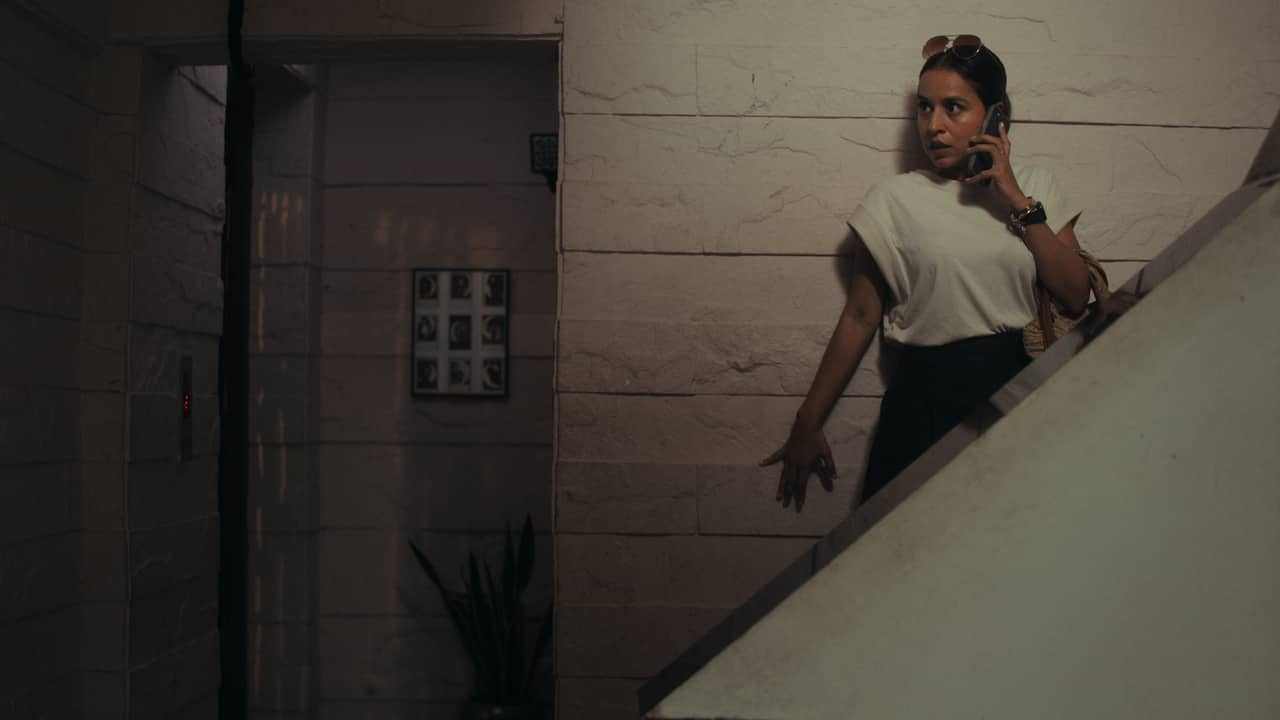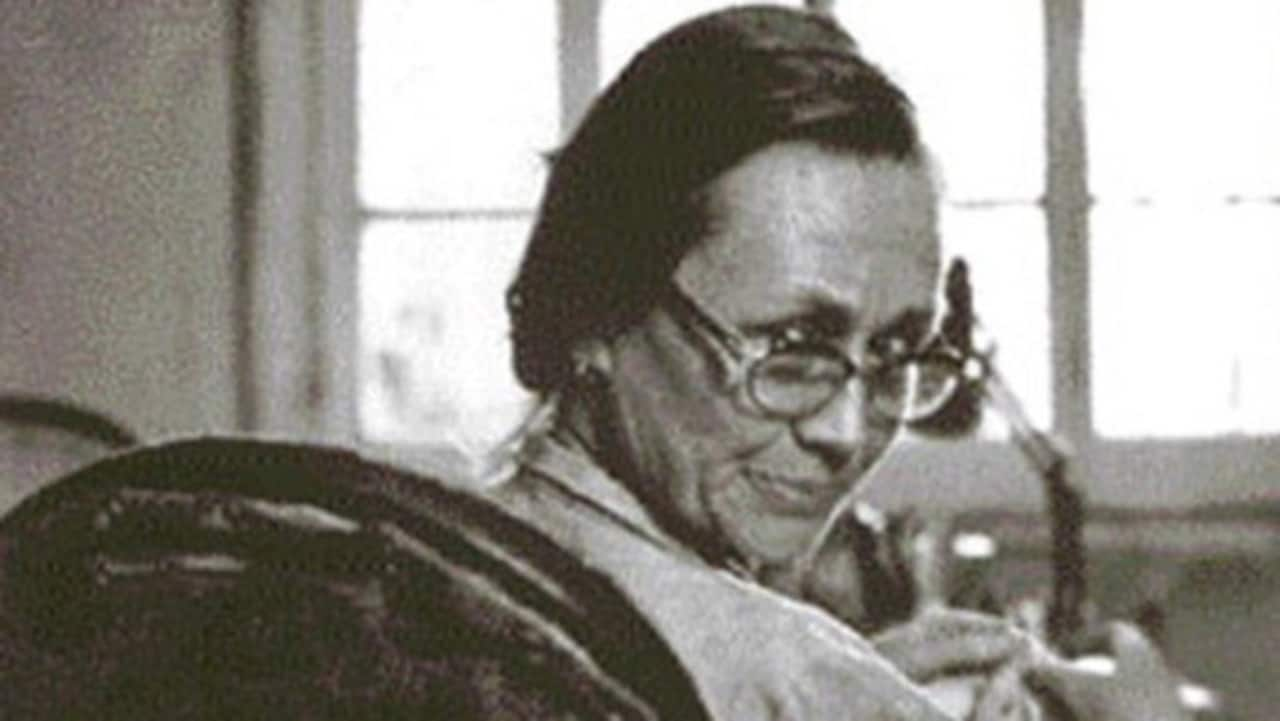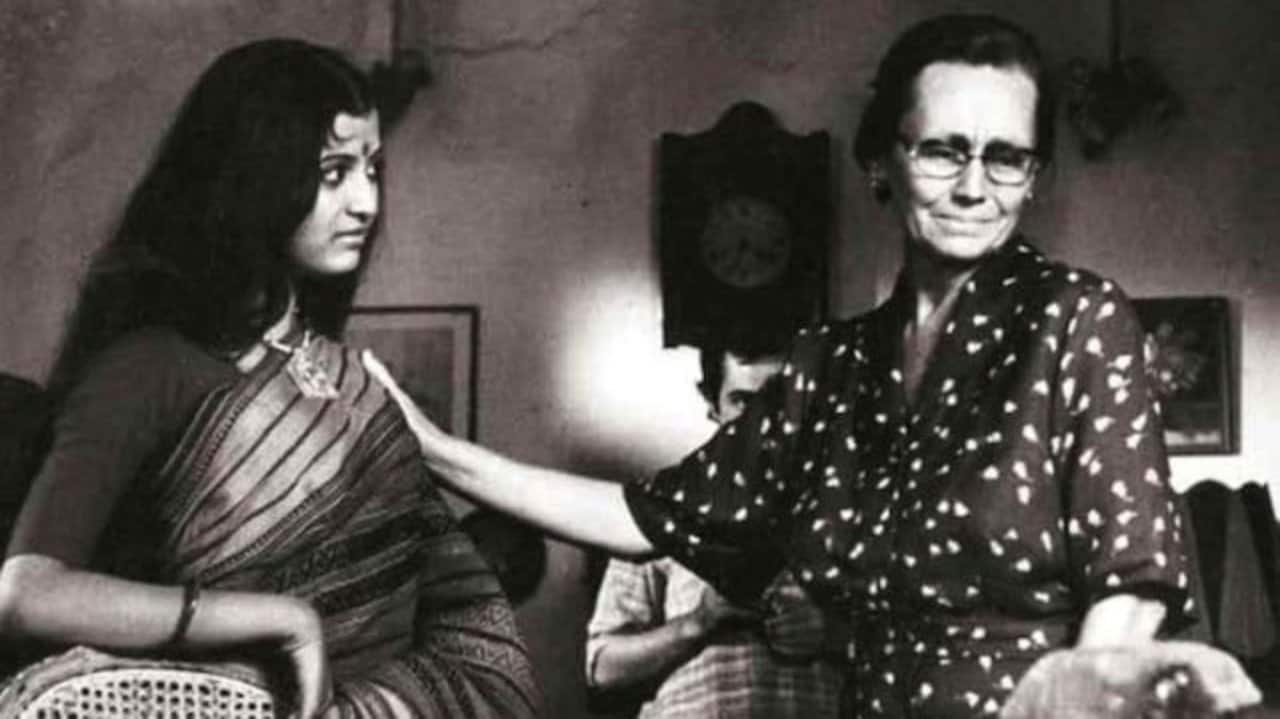



In 36 Chowringhee Lane, Aparna Sen’s unforgettable film about Anglo-Indians, ageing and loneliness (and so much more), Jennifer Kendal’s character Violet Stoneham permits her former student Nandita, played by Debashree Roy, to use her apartment during the day when she teaches in school. Roy and her boyfriend Samaresh, played by Dhritiman Chatterjee, are searching for a sliver of privacy in 1980s' Calcutta—a bustling intrusive city that offers none. It is a reasonably frank request. Although Nandita tells Miss Stoneham that her friend Samaresh needs a quiet place to write, Kendal’s schoolteacher is aware that the two are a couple. She is lonely and she, in turn, seeks warm human conversation and a whiff of youth. One day, when she returns home from school, she sees the couple kissing. The camera captures her standing for several seconds as if in shock, a bolt of thunder briefly on the soundtrack, and gradually moves to a close-up, the door swaying in the squall casting darting shadows on her face. It is a tremendously moving moment, more so by its lack of speaking or articulation.
 Tilottama Shome in a still from 'Lust Stories 2'. (Photo credit: Netflix)
Tilottama Shome in a still from 'Lust Stories 2'. (Photo credit: Netflix)Konkona Sen Sharma’s deservedly lauded short film, The Mirror, in Lust Stories 2, is the other face of this premise: a flat used for privacy. Tilottama Shome’s Ishita has given a set of keys to her domestic help, Seema, played by Amruta Subhash. Ishita is, at first, alarmed to see her help having sex with a man she does not know on her bed. She runs out of her flat and hides in the landing because she is so taken aback and speed dials her friend to tell her what happened. (Her friend, Sen Sharma’s voice, instructs her to fire the maid.) Later that day, after trying to sleep off her migraine, Ishita masturbates. The shock perhaps turned her on. She returns again and again, lying and leaving office early, to watch Seema “didi” in action. Although she had not given her keys to be used for coitus, Amruta Subash’s Seema soon realizes that she has Ishita’s tacit approval to continue with her afternoon activities.
What if Miss Stoneham had not been shocked by her student’s kiss? Or, taken over by sadness by her own memories? What if she had, in fact, been unsure of what the sight of intimacy did to her? What if she was not sure of what she felt, like Ishita?
 Jennifer Kendal played Violet Stoneham, a lonely and ageing schoolteacher, in 36 Chowringhee Lane. (Photo via Twitter/Mubi)
Jennifer Kendal played Violet Stoneham, a lonely and ageing schoolteacher, in 36 Chowringhee Lane. (Photo via Twitter/Mubi)In interviews for the Netflix Lust Stories 2 anthology, Sen Sharma has stated that the idea for The Mirror came to her from a friend’s experience. When the producer of Lust Stories 2 had come to her to ask if she had a film for the anthology, Sen Sharma asked her friend for permission to develop the episode into an idea. \
When we spoke on the phone for an interview, she said that 36 Chowringhee Lane had not been specifically on her mind when she developed the story with her co-writer Pooja Tolani. “But there are things that I sought to recreate from the film. The elevator, for instance. I wanted an elevator with a grille [like in 36 Chowringhee Lane]. And I wanted that sound of the elevator opening, but we couldn’t really get that. It’s so difficult to find an elevator like that today. I realized that I also used the close-up of the face as a cut—like you see with Jennifer Kendal in the school. There was a time in my childhood when I watched 36 Chowringhee Lane every day I think! So, that influence is definitely there,” Sen Sharma said.
Tributes to 36 Chowringhee LaneOne of the most striking images from 36 Chowringhee Lane is the pattern of diamond-shaped patches of light on the floor cast by the collapsible gate of an old-fashioned elevator as it travels up and down—an exquisite visual created by the cinematographer Ashok Mehta—which is used several times in the film. Almost like a motif. Does it signify the ephemeral light and company in Miss Stoneham’s life, or is it simply an image of such beauty that director Sen returns to it more than once? Mehta won the National Award for cinematography in 1982 for the film. (Sen won best director.)
In The Mirror too, the elevator appears several times, indeed even in the trailer. We see it the first time when Shome’s Ishita returns from work with a migraine, sees Seema (Subhash) in her bedroom and runs out in shock. We then see it again when Subhash leaves the flat with her lover. We see it yet again when Ishita leaves the flat, utilized to show how her neighbours speak of her behind her back. It symbolizes perhaps a passage to the world outside the flat.
The close-up edit that Sen Sharma references is a cut to Miss Stoneham’s face from a dream sequence, where a young Miss Stoneham in a bride’s outfit (played by Sanjana Kapoor, Kendal’s real-life daughter) is gunned down at her wedding, and the party changes swiftly to a funeral gathering. The sequence is made especially effective, and startling, with the cut to a close-up of the older Miss Stoneham’s face (Kendal). Unlike most dream sequences, she is not asleep, she is waiting at a school meeting. The Mirror’s riffs on this close-up cut nicely—the camera closes in on Ishita’s eye’s, appearing widened by the camera’s proximity and suggesting shock as she watches Seema in coitus, and zooms out smoothly to a meeting at Ishita’s office. The cinematography by Anand Bansal is sharp, and particularly evocative at bringing out the difference between Ishita’s tasteful flat, and Seema’s hovel.
 Amruta Subhash and Konkona Sen Sharma on the sets of The Mirror (Lust Stories 2). (Photo via Instagram/Konkona)Sex, Alone-ness and Public Space
Amruta Subhash and Konkona Sen Sharma on the sets of The Mirror (Lust Stories 2). (Photo via Instagram/Konkona)Sex, Alone-ness and Public SpaceThe thread connecting the films is the subject of sex. The Mirror has been praised for its female gaze. For not titillating the viewer. Most of all for not exploiting its subaltern subject for sexual consumption. The praise is deserved, particularly when you consider the last film in the Lust Stories 2 anthology titled Tilchatta. Arguably, it framed a predator’s point of view, but it does present a domestic worker in a stereotypically exploitative frame.
36 Chowringhee Lane, too, does not titillate, yet it is, in fact, far sexier than Sen Sharma’s short. The sequence that makes Miss Stoneham stop short at the door would make most viewers catch their breath. It is superbly sensual, and far from sleazy. The thought of sex fills the film. In an early sequence, Samaresh complains that making out in taxis is too expensive for an unemployed young man like him. The film is not embarrassed about sexual desire. In contrast, the sex in The Mirror appears distant and in outlines. In one of the sequences, Sagar Desai’s background music is distinctly jaunty, suggesting a touch of the comic perhaps?
Most significantly, the young woman Nandita (Roy) is as interested in sex as Samaresh. The film released in 1981. To my mind, it would take until Mira Nair’s Monsoon Wedding (2001) for sex to be discussed as frankly again in a film meant for Indian audiences. In Hindi cinema, the moment of a woman’s frank sexual desire is typically dated to 2009 when Paro (Mahie Gill) carried a mattress for a countryside romp with Dev (Abhay Deol) in Anurag Kashyap’s Dev D.
“One of the things that I enjoyed the most in writing this was that both women are transgressing,” said Sen Sharma. “And they know it. Because what you feel and what you are allowed to feel are often at odds with each other. The big confrontation between them was a performance of outrage from both. It is Kamal (played by Shrikant Yadav) who is the conscience of the film.”
This is the opposite of 36 Chowringhee Lane, whose conscience clearly resides in Nandita, the young woman who acknowledges that the couple have taken a lot from her old schoolteacher. The Mirror doesn’t make its women feel guilt for their transgressive pleasures. Which is a nice touch because women are typically assigned the responsibility for conscience-keeping in narratives.
 Debashree Roy as Nandita and Jennifer Kendal as Violet Stoneham in 36 Chowringhee Lane. (Image via Twitter/BombayBasanti)
Debashree Roy as Nandita and Jennifer Kendal as Violet Stoneham in 36 Chowringhee Lane. (Image via Twitter/BombayBasanti)Another thread connecting the films is loneliness. In 36 Chowringhee Lane, Miss Stoneham’s loneliness is spelt out by long stretches of her walking alone or sitting alone. in the Mirror, Ishita’s solitude is less clearly articulated. I would call it alone-ness rather than loneliness. But you sense it at several points—half-heartedly swiping dating apps, trying to look interested speaking with the men she meets at restaurants, looking away when her neighbours discuss her literally behind her back in the elevator, that phone call where her friend Sam confronts her about voyeurism. (To me, the masturbation scenes are less suggestive of this. Perhaps because they suggest agency, taking things into one’s hands.) Sen Sharma has directed three films until now—this, A Death in the Ganj and a 17-odd minute, charming short called Naamkaran. A Death in the Ganj is a meditation on loneliness but all three deal with alone-ness to some extent. Aparna Sen’s early filmography—36 Chowringhee Lane, Parama, Yugant, Paromitar Ek Din—dwells on loneliness.
Sen Sharma, however, disagreed about loneliness. “I don’t see Ishita as more lonely than Seema, for instance. She lives alone, but one can be lonely even if they are married. Living in a room overflowing with people. I don’t think of loneliness as a particular theme in this work. There’s desire, pleasure, class positionalities. To me, loneliness is a part of the human condition.”
That loneliness is not a function of being single is an interesting thought. But to me as a viewer, Seema’s loneliness is not as palpable as Ishita’s. Perhaps because we rarely see Seema alone with her thoughts unlike Ishita. Ishita is certainly not achingly lonely like Miss Stoneham, or even Shutu in Sen Sharma’s own A Death in the Ganj. This is why I would call it alone-ness rather than loneliness, because Ishita seems less resigned, almost matter-of-fact about being on her own. She appears to view it as a function of urban living. What is palpable, rather, is the lack of privacy in Seema’s living quarters, overflowing with people. Which is why The Mirror recalls 36 Chowringhee Lane so strongly.
Perhaps the most interesting comment in 36 Chowringhee Lane is when Nandita asks for Miss Stoneham’s pet cat to be removed because she feels he is watching her. The public gaze lingers so much on the bodies of young women in particular that she can’t abide even a cat. In The Mirror, Seema (Subhash) realizes that she enjoys being watched but Ishita (Shome) isn’t ready to admit she enjoys watching for a while.
But it isn’t just a conversation about voyeurism that Sen Sharma takes forward. In The Mirror, she also continues the discussion Sen started about space and who has the right to it in India. Both are stories about the use of a space for sex. Both speak about the intense discomfort with public displays of desire in India. (R. Balki’s short Made for Each Other says nothing about this although it could have said so much.) In 36 Chowringhee Lane, it was a young white-collar couple who had not yet found a job and were thus unable to afford their own space. In post-liberalization India, this kind of couple would easily have the means for their own space. Sen Sharma’s story wonders about those who can’t. If you recall, think of the opening frame of the short—a view of Mumbai’s skyscrapers and the slum tenements amid them.
Discover the latest Business News, Sensex, and Nifty updates. Obtain Personal Finance insights, tax queries, and expert opinions on Moneycontrol or download the Moneycontrol App to stay updated!
Find the best of Al News in one place, specially curated for you every weekend.
Stay on top of the latest tech trends and biggest startup news.